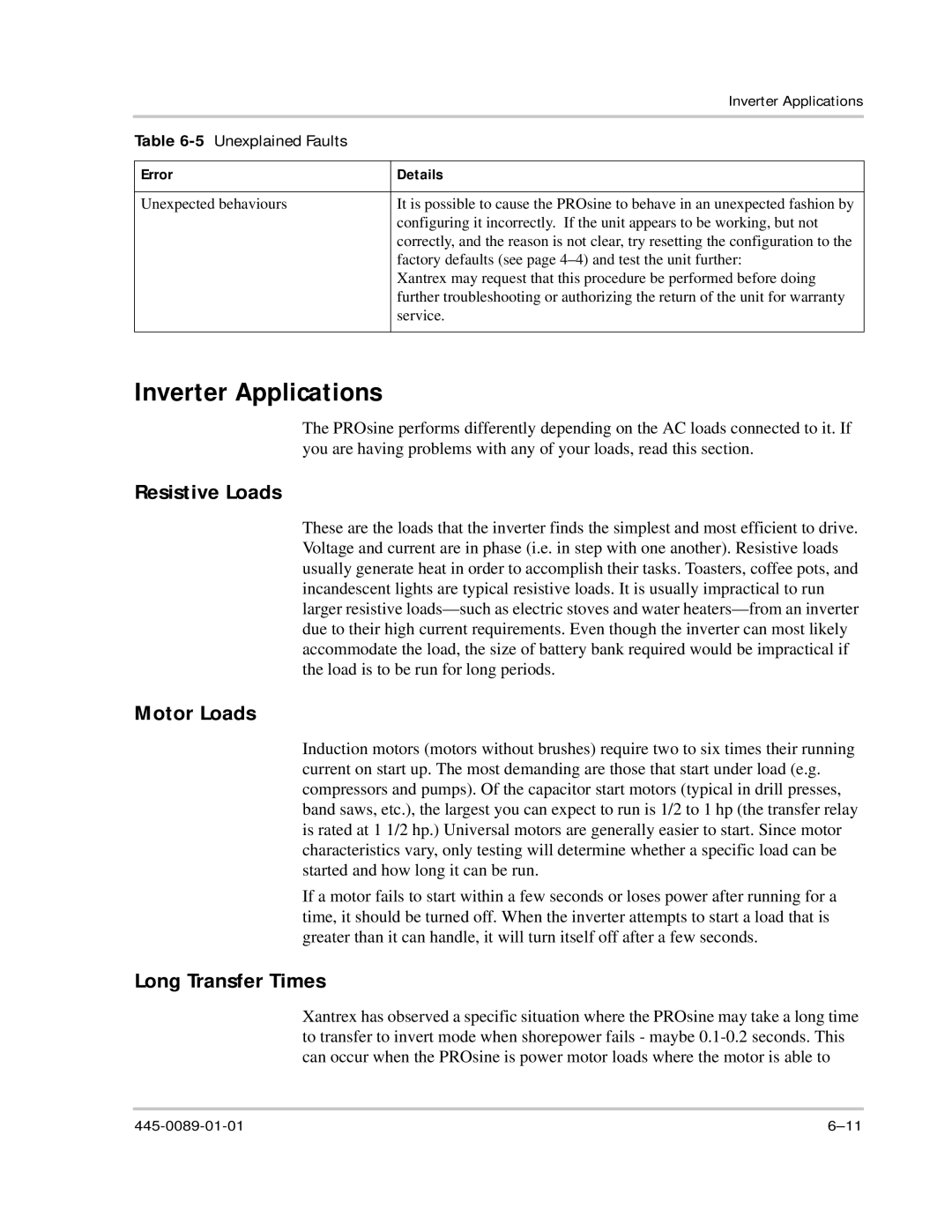| Inverter Applications |
|
|
Table |
|
|
|
Error | Details |
|
|
Unexpected behaviours | It is possible to cause the PROsine to behave in an unexpected fashion by |
| configuring it incorrectly. If the unit appears to be working, but not |
| correctly, and the reason is not clear, try resetting the configuration to the |
| factory defaults (see page |
| Xantrex may request that this procedure be performed before doing |
| further troubleshooting or authorizing the return of the unit for warranty |
| service. |
|
|
Inverter Applications
The PROsine performs differently depending on the AC loads connected to it. If you are having problems with any of your loads, read this section.
Resistive Loads
These are the loads that the inverter finds the simplest and most efficient to drive. Voltage and current are in phase (i.e. in step with one another). Resistive loads usually generate heat in order to accomplish their tasks. Toasters, coffee pots, and incandescent lights are typical resistive loads. It is usually impractical to run larger resistive
Motor Loads
Induction motors (motors without brushes) require two to six times their running current on start up. The most demanding are those that start under load (e.g. compressors and pumps). Of the capacitor start motors (typical in drill presses, band saws, etc.), the largest you can expect to run is 1/2 to 1 hp (the transfer relay is rated at 1 1/2 hp.) Universal motors are generally easier to start. Since motor characteristics vary, only testing will determine whether a specific load can be started and how long it can be run.
If a motor fails to start within a few seconds or loses power after running for a time, it should be turned off. When the inverter attempts to start a load that is greater than it can handle, it will turn itself off after a few seconds.
Long Transfer Times
Xantrex has observed a specific situation where the PROsine may take a long time to transfer to invert mode when shorepower fails - maybe
